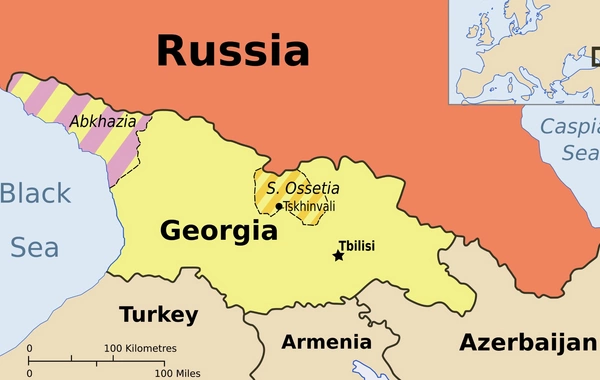
Azerbaijan holds a key position in the Middle Corridor. Its role as the western gateway ensures the continuity of trade routes extending into Europe.
Google images
The geopolitical turbulence of recent years has redefined trade routes and opened new opportunities for regions like the South Caucasus and Central Asia. Azerbaijan and Kazakhstan, in particular, have emerged as pivotal players in this transformation. The economic sanctions imposed on Russia have created significant challenges for the China-Kazakhstan rail corridor, a critical segment of the Belt and Road Initiative (BRI) that transits through Russia and Belarus. Once a primary route connecting China and Europe, this corridor now faces the prospect of diminished utility, as Beijing cautiously weighs its exposure to potential economic repercussions, The Caspian Post reports.
In this evolving landscape, the Middle Corridor-or the Trans-Caspian International Transport Route-has risen to prominence as a viable alternative. Stretching across Central Asia and the South Caucasus, the corridor offers strategic value not only for China but also for Kazakhstan, Azerbaijan, and other nations in the region.
Kazakhstan: A Regional Anchor
Kazakhstan's importance in the Middle Corridor cannot be overstated. In June 2022, during the BRICS+ High-Level Dialogue on Global Development, President Kassym-Jomart Tokayev highlighted Kazakhstan’s potential as a "buffer market" connecting East and West, North and South. His vision underscores the long-term benefits of fostering an open, interconnected, and sustainable global economy. The Belt and Road Initiative, he argued, could play a central role in this transformation, paving the way for a new era of growth and cooperation.
Kazakhstan’s strategic location, coupled with its investment in infrastructure, positions it as a critical hub for transcontinental trade. The country has already demonstrated its capability to serve as a container transit point, linking Asia and Europe. This role is becoming increasingly vital as global trade flows shift in response to the war in Ukraine.
Azerbaijan: The Gateway to the West
Azerbaijan, too, holds a key position in the Middle Corridor. Its role as the western gateway ensures the continuity of trade routes extending into Europe. As the corridor revives the ancient Silk Road, Azerbaijan's modern infrastructure-such as the Port of Alat-plays a crucial role in facilitating the movement of goods between continents.
The Middle Corridor not only provides an alternative land route between China and Europe but also connects multiple regions, including Central and South Asia, the Middle East, and North Africa. By linking diverse economies, this corridor embodies the spirit of the Silk Road, fostering cultural and economic exchange across Eurasia.
Challenges and Opportunities
Despite its advantages, the development of the Middle Corridor is not without obstacles. Among the primary challenges is the construction of the China-Kyrgyzstan-Uzbekistan railway. This project is essential for optimizing the corridor’s efficiency and providing Uzbekistan with alternative routes to major international markets. The country’s ambition to become a regional transit hub aligns with broader regional goals, but cooperation is critical to overcoming logistical and political hurdles.
Another challenge lies in fostering synergy among participating countries. The corridor spans a diverse group of nations, each with its own economic priorities and geopolitical considerations. Kazakhstan, China, Uzbekistan, and Azerbaijan must collaborate to address these challenges, leveraging shared interests to create a seamless and efficient transport network.
One notable advantage of the Middle Corridor is its comparative efficiency. It is 2,000 kilometers shorter than the Trans-Siberian route and offers a more favorable climate for year-round operations. Moreover, it is three times faster than traditional maritime routes from China to Europe, cutting transit times to approximately 15 days. This speed, combined with access to port infrastructure in participating countries, opens up significant opportunities for trade with regions like the Middle East, North Africa, and the Mediterranean.
A New Geopolitical Landscape
The ongoing war in Ukraine has accelerated the realignment of global trade flows. While the conflict will eventually end, the balance of power that has dominated since the Cold War will be irrevocably altered. In this new geopolitical reality, transport and logistics corridors across Eurasia will play a defining role. The Middle Corridor, with its strategic location and growing importance, is well-positioned to be a cornerstone of this emerging order.
For Kazakhstan, the corridor offers a unique opportunity to strengthen trade ties with Europe through Azerbaijan, Georgia, and Türkiye. As sanctions continue to isolate Russia economically, the corridor’s potential is expanding, evidenced by the steady increase in freight volumes. However, as President Tokayev aptly noted, the accelerating pace of global change demands proactive measures. Central Asian nations must work together to build a successful and balanced regional framework, one that respects the interests of all stakeholders and promotes sustainable development.
The Middle Corridor is more than a trade route; it is a vision for a connected and prosperous Eurasia. By addressing challenges collaboratively and capitalizing on its inherent advantages, the corridor can reshape the geopolitical and economic landscape of the region. As Azerbaijan, Kazakhstan, and their partners continue to invest in this ambitious project, they are not just building infrastructure-they are charting a new course for the future of global trade and cooperation.
Share on social media

Azerbaijan holds a key position in the Middle Corridor. Its role as the western gateway ensures the continuity of trade routes extending into Europe.